Dental restoration is an important branch of dentistry that encompasses various treatments and techniques aimed at restoring the function, appearance, and overall health of teeth that have been damaged due to cavities, trauma, periodontal disease, or other reasons. Whether it’s repairing decayed, broken, or missing teeth, dental restoration provides effective solutions for patients. With advancements in dental technology, the methods for tooth restoration have become increasingly diverse, allowing patients to choose the most suitable treatment for their needs.
This article will provide a comprehensive overview of dental restoration, including different methods of restoration, the restoration process, indications, material selection, and aftercare. By reading this article, you will gain a deeper understanding of the importance and process of dental restoration, which will help you make the most informed decision for your treatment.
1. Basic Concept of Dental Restoration
Dental restoration refers to the process of repairing or replacing teeth that have been damaged or lost due to decay, trauma, or disease. The goal of dental restoration is to restore the function, appearance, and health of the affected tooth. Restorative treatments can help improve chewing ability, restore the aesthetic appearance of the teeth, and enhance the patient’s quality of life. Common dental restoration methods include:
- Dental Fillings: Primarily used to restore decayed teeth.
- Dental Crowns: Suitable for repairing teeth with extensive decay or damage.
- Dental Bridges: Used to replace one or more missing teeth.
- Dental Implants: A long-term solution for replacing missing teeth, especially for single or multiple missing teeth.
- Dentures: Used to replace large sections of missing teeth or for patients who cannot use dental implants.
Each of these restoration methods has specific indications, and a dentist will choose the most suitable option based on the patient’s condition, overall health, and needs.
2. Indications for Dental Restoration
Dental restoration is necessary in various situations, and its indications are quite broad. The primary indications include:
2.1 Cavities Restoration
Cavities (dental caries) are one of the most common dental problems. As cavities progress, teeth begin to lose structure and require restoration. The most common treatment for cavities is dental fillings, which can restore the tooth to its original form and function.
2.2 Tooth Damage Restoration
Tooth damage can be caused by external trauma, wear and tear, or excessive grinding (bruxism). When a tooth loses a significant amount of structure, restorative methods like crowns, fillings, or veneers are typically used.
2.3 Tooth Loss Restoration
Tooth loss can occur for various reasons, such as cavities, periodontal disease, or trauma. Missing teeth not only affect chewing function but also lead to shifting of neighboring teeth. Common restoration methods for tooth loss include dental implants, dental bridges, and dentures.
2.4 Aesthetic Restoration
With the increasing emphasis on aesthetics, many patients seek dental restoration to improve the appearance of their teeth. Aesthetic restoration includes procedures such as teeth whitening, veneers, and full-ceramic crowns to restore the natural beauty of the teeth.

3. Major Methods of Dental Restoration
3.1 Dental Fillings
Dental fillings are one of the most common ways to treat cavities. They are used to restore the function of a tooth that has been affected by decay. The materials used for fillings vary, and the most common options include:
- Amalgam: A traditional filling material made from a mixture of silver, mercury, and other metals. It is durable and cost-effective but not aesthetically pleasing.
- Composite Resin: A tooth-colored material that blends well with natural teeth and is often used for restoring cavities in visible areas, such as the front teeth.
- Glass Ionomer: A material that bonds chemically with the tooth and releases fluoride, which helps in preventing further decay.
The filling procedure involves removing the decayed part of the tooth, cleaning the cavity, placing the filling material, hardening it, and then polishing the tooth for a smooth finish.
3.2 Dental Crowns
When a tooth is severely damaged or decayed and cannot be repaired with a filling, a dental crown is often recommended. A dental crown is a cap that covers the entire tooth to restore its shape, size, strength, and function. The types of crowns include:
- All-Ceramic Crowns: These crowns are made from a durable ceramic material and are highly aesthetic, closely resembling natural teeth. They are typically used for front teeth.
- Porcelain-Fused-to-Metal Crowns: These crowns combine the strength of metal with the aesthetic appeal of porcelain. They are commonly used for restoring back teeth.
- Full-Metal Crowns: Made from metal alloys such as gold or platinum, these crowns are durable and ideal for back teeth but lack the aesthetic quality of porcelain crowns.
The process of placing a dental crown typically involves shaping the tooth, taking impressions, placing a temporary crown, fabricating a permanent crown, and then cementing it onto the tooth.
3.3 Dental Bridges
Dental bridges are used to replace one or more missing teeth. A bridge involves placing crowns on the teeth adjacent to the gap and attaching a false tooth (or teeth) in the middle. There are different types of dental bridges:
- Traditional Bridges: The adjacent teeth are filed down to make space for crowns, and the bridge is cemented over them.
- Cantilever Bridges: Used when there are adjacent teeth on only one side of the missing tooth.
- Maryland Bridges: A more conservative option where a false tooth is attached to the adjacent teeth using a metal or porcelain framework.
The dental bridge process involves preparing the adjacent teeth, taking impressions, creating the bridge, and placing it in the gap.
3.4 Dental Implants
Dental implants are a modern solution for replacing missing teeth. A dental implant involves surgically placing a titanium post into the jawbone, which acts as an artificial tooth root. Once the implant fuses with the bone (a process called osseointegration), a dental crown is placed on top to restore the tooth’s appearance and function.
The dental implant process consists of the following stages:
- Implant Placement: The titanium post is surgically inserted into the jawbone.
- Healing and Osseointegration: The implant fuses with the bone over several months.
- Crown Placement: A custom-made crown is placed on the implant, restoring the missing tooth.
Dental implants are an excellent long-term solution for tooth loss, providing both aesthetic and functional benefits. They are suitable for replacing single or multiple missing teeth, and even full arches of missing teeth.
3.5 Dentures
Dentures are removable prosthetics used to replace missing teeth, especially when several or all teeth in a dental arch are lost. Dentures can be full (for complete tooth loss) or partial (for missing several teeth in a dental arch). The process of making dentures includes taking impressions of the mouth, designing the denture, and then fitting the patient with the finished prosthesis.
There are two main types of dentures:
- Full Dentures: Used when all the teeth in a dental arch are missing.
- Partial Dentures: Used when only a few teeth are missing, and the remaining teeth are used to support the denture.
Dentures need to be regularly cleaned and adjusted to ensure they remain comfortable and effective.
4. Choosing Dental Restoration Materials
The selection of materials for dental restoration directly affects the outcome of the treatment. There are several materials available, each with its advantages and disadvantages. Patients should discuss with their dentist which material is best suited for their needs.
4.1 Filling Materials
- Amalgam: Durable and long-lasting, but not aesthetically pleasing. It is best used for back teeth.
- Composite Resin: Tooth-colored and aesthetic, ideal for front teeth, but slightly less durable than amalgam.
- Glass Ionomer: Releases fluoride, making it good for preventing future decay, but not as durable as other materials.
4.2 Crown Materials
- All-Ceramic Crowns: Aesthetic and natural-looking, ideal for front teeth, but may wear down more quickly than metal-based crowns.
- Porcelain-Fused-to-Metal Crowns: A balance of strength and aesthetics, suitable for both front and back teeth.
- Full-Metal Crowns: Strong and durable but less aesthetically pleasing, used primarily for back teeth.
4.3 Bridge Materials
- Porcelain-Fused-to-Metal Bridges: Strong and aesthetically pleasing, suitable for most patients.
- All-Porcelain Bridges: More aesthetic but less durable, typically used for front teeth.
- Stainless Steel Bridges: An affordable option for temporary restorations.
5. Aftercare and Maintenance of Dental Restorations
Proper aftercare is crucial to ensure the longevity and functionality of dental restorations. Following these guidelines will help maintain the success of the restoration:
5.1 Oral Hygiene
- Brushing: Brush your teeth twice a day with a soft-bristled toothbrush. Be sure to clean around the restoration area to prevent plaque buildup.
- Flossing: Use dental floss or interdental brushes to clean between teeth and around restorations.
- Regular Cleanings: Schedule regular professional cleanings to remove plaque and tartar.
5.2 Dietary Considerations
- Avoid Hard Foods: Avoid chewing on hard objects like ice or hard candy to prevent damage to restorations.
- Limit Staining Foods: Limit consumption of foods and beverages that can stain teeth, such as coffee, tea, or red wine.
5.3 Regular Checkups
Visit
your dentist regularly to monitor the condition of your restorations. Your dentist will check for wear, damage, and the general health of your teeth and gums.
6. Conclusion
Dental restoration plays a crucial role in maintaining the function, appearance, and health of your teeth. With advances in dental technology, there are now more options than ever for restoring damaged or missing teeth. Whether you require fillings, crowns, bridges, implants, or dentures, modern restoration techniques offer highly effective and long-lasting solutions.
By understanding the different methods of dental restoration, patients can make informed decisions about their treatment options and enjoy the benefits of a healthier, more beautiful smile. Proper care and regular dental visits will ensure that your dental restoration remains effective for years to come.

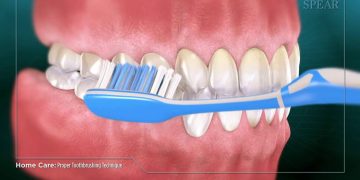
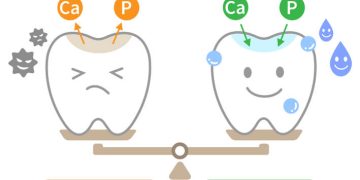
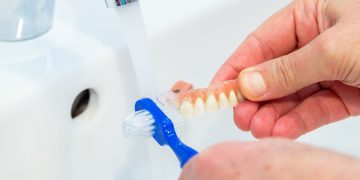




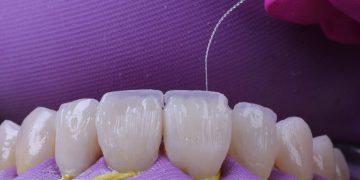
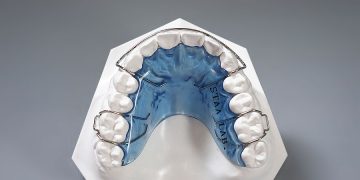

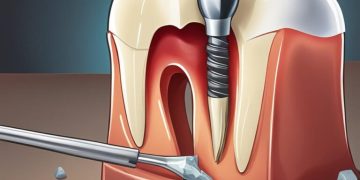



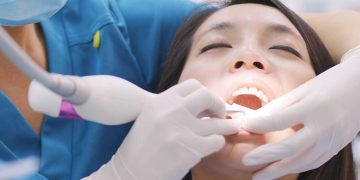

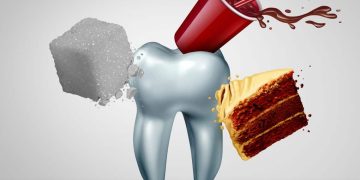







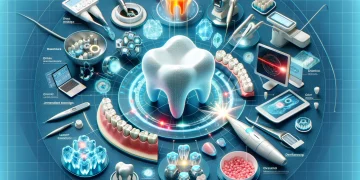



















Discussion about this post